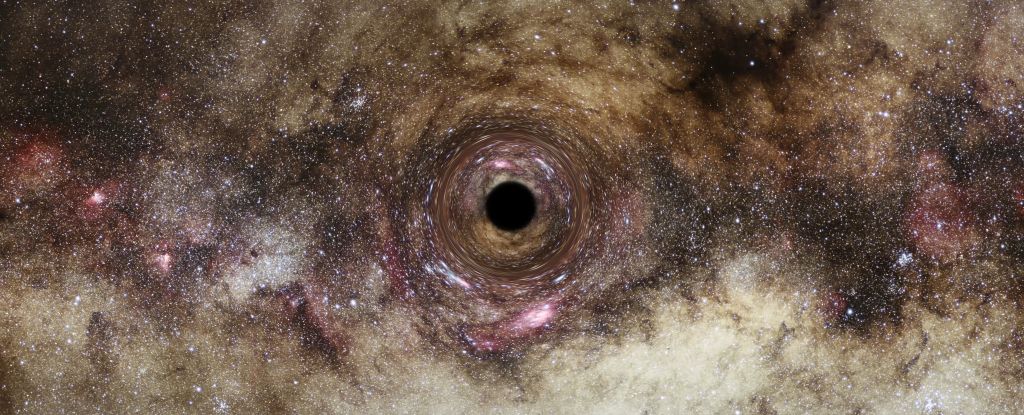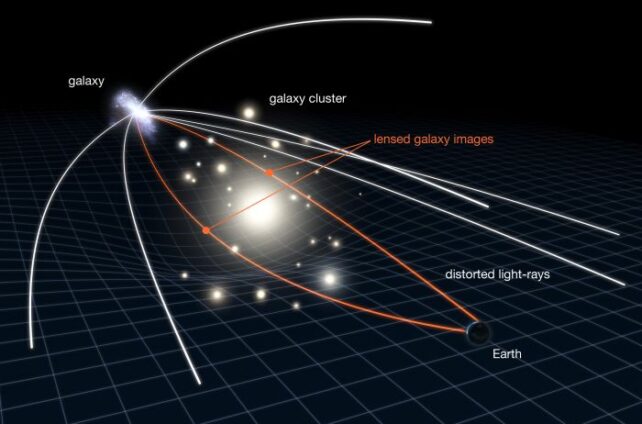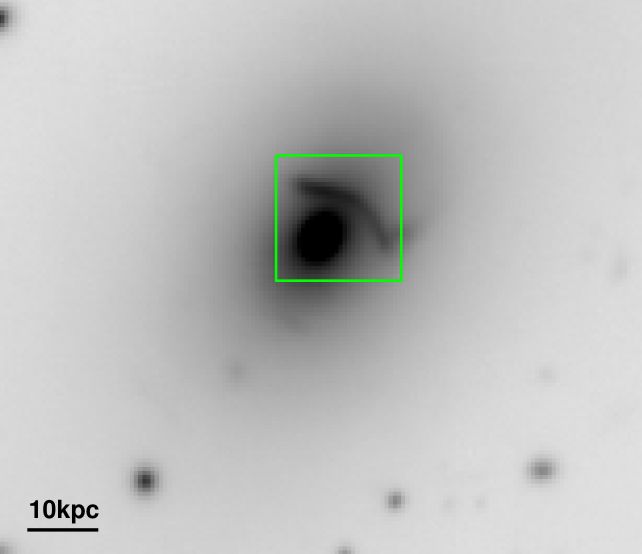The size of one of the largest black holes ever observed has been found to be even bigger than previously estimated.
The detection of a colossal black hole has been made possible by the way light bends around a massive invisible object. This gigantic ultramassive black hole, which weighs around 32.7 billion times the mass of the Sun, resides in a galaxy situated at the heart of a vast cluster called Abell 1201, located approximately 2.7 billion light-years from Earth.
By using the phenomenon of curved light to measure masses precisely, scientists have discovered that the newly estimated mass of the black hole exceeds the previous estimate by at least 7 billion solar masses.

Physicist James Nightingale of Durham University in the UK describes this massive black hole, which weighs around 30 billion times the mass of the Sun, as one of the largest ever detected, approaching the theoretical limit for the maximum size of black holes. Although black holes are not visible, they can be detected by observing the effect they have on their surroundings, as they emit no detectable light unless they are actively accreting material, which produces a significant amount of radiation.

Gravitational lensing is a useful technique to detect black holes that are not actively accreting material. It occurs when the mass of an object warps the space-time around it, like a heavy weight on a rubber sheet. The resulting curvature causes light to follow a curved path, which can lead to interesting visual effects for distant observers. As light passes through the warped space-time, it becomes distorted, stretched, and magnified, producing distorted images of background objects, such as far-off galaxies. Astronomers can study this lensing effect to explore the characteristics of the lensing mass, which could range from a small, stellar-mass black hole to a large cluster of galaxies.
In the case of Abell 1201, the central galaxy or the Brightest Cluster Galaxy (BCG) is a massive, elliptical galaxy with a strong gravitational lens. In 2003, astronomers discovered an elongated smear, similar to an eyebrow, alongside the galaxy, and in 2017, they discovered a second, fainter smear even closer to the center of the galaxy.

Astronomers had suggested the possibility of a massive black hole at the center of the Brightest Cluster Galaxy (BCG) in Abell 1201, but the available data lacked the necessary details to confirm this and learn more about it. However, physicist James Nightingale and his team had access to recent observations and developed a method to understand them. They simulated hundreds of thousands of light movements through the Universe, modifying the black hole’s mass at the center of the galaxy and searching for outcomes that resembled the observed lensing of Abell 1201 BCG.
Nearly all of their simulations indicated the presence of an ultramassive black hole, with a mass of 32.7 billion times that of the Sun. This makes it one of the top 10 most massive black holes ever detected, with a diameter of an event horizon spanning over 1,290 astronomical units. While the specific properties of Abell 1201’s gravitational lens are unique, Nightingale’s team believes their approach has potential for detecting and measuring other black holes in the Universe.
According to Nightingale, the use of gravitational lensing enables the study of dormant black holes, which is currently not feasible for remote galaxies.
“This technique has the potential to help us detect numerous black holes beyond our vicinity in the Universe and shed light on the evolution of these unique entities in earlier cosmic eras.”
Furthermore, it may provide insight into how these black holes attain such enormous sizes.
The research has been published in the Monthly Notices of the Royal Astronomical Society.
Do not forget to share your opinion with us to provide you with the best posts !



0 Comments